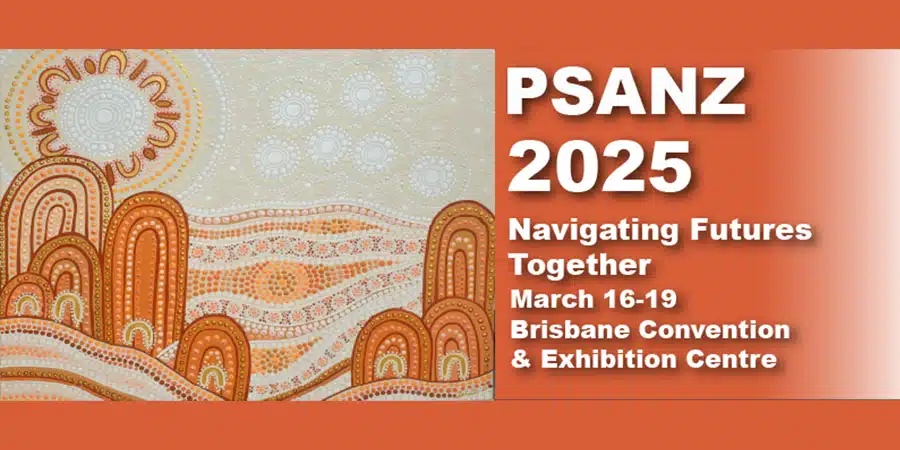
Each year, PSANZ presents a number of awards and scholarships to highlight innovation and excellence in perinatal research. CPA is thrilled to announce the winners of this year’s Cerebral Palsy Award and to continue supporting world-class research that drives better outcomes for babies, children, and families.
This year’s first prize went to Dr Pranav Jani and his team for their innovative work towards reducing adverse outcomes in extremely preterm infants through targeted use of monitoring with Near Infra-Red Spectroscopy (NIRS) and a standardised treatment plan. NIRS measures fluctuations in oxygen supply to the brain in real time allowing clinicians to intervene promptly. The study showed that the group who were monitored, and then received the treatment plan, had less time where they were under or over oxygenated in their first five days of life. This is the first step, and these results will guide the next phase which will also look at longer term outcomes.
The second prize was awarded to Aurelia Leung and her team for their study on the impact of assisted conception such as IVF on babies born preterm admitted to neonatal intensive care units. The study found that assisted conceptions with single births have better outcomes, and over time this has improved with the implementation of the practice of single embryo transfers.
The Perinatal Society of Australia and New Zealand was founded in 1983 and is dedicated to improving the health and long-term outcomes for mothers and babies by fostering communication and collaboration between all those involved in perinatal research.
These awards highlight CPA’s commitment to advancing research that can significantly improve health outcomes for newborns at risk of cerebral palsy. Please join us in congratulating the winners, Pranav and Aurelia, and we look forward to hearing more about their groundbreaking work in the future. A summary of their papers is below:
Near Infra-Red Spectroscopy Targeted Use To Reduce Adverse Outcomes in Extremely Preterm Infants (NIRTURE): A Multi-centre International Phase II Randomised Controlled Trial
1 Westmead Hospital, Sydney, Australia
2 University of Sydney, Sydney, Australia
3 Nepean Hospital, Sydney, Australia
4 Wellington Hospital, Wellington, New Zealand
5 University of Otago, Wellington, New Zealand
6 Royal Hospital for Women, Sydney, Australia
7 University of New South Wales, Sydney, Australia
8 Connecticut Childrens’, Hartford, US
9 University of Connecticut, Hartford, US
10 The Children’s Hospital at Westmead, Sydney, Australia.
Background: Near-infrared spectroscopy (NIRS) allows non-invasive monitoring and targeting of cerebral oxygenation potentially reducing brain injury. In infants born <29 weeks gestation, does NIRS monitoring using a single device with a dedicated treatment guideline compared to blinded NIRS monitoring with standard care, reduce the burden of cerebral hypoxia and hyperoxia in the first 5 days after birth (ACTRN12621000778886)?
Methods: With explicit or deferred consent, we randomly allocated singletons or twins to the intervention or standard care group stratified by gestational age (<26 weeks and ≥ 26+0–28+6 weeks) and study site. The target range for the primary outcome was 65–90%, measured using a neonatal sensor and Nonin SenSmart® oximeter. The secondary clinical outcomes before hospital discharge were measured.
Results: From October 2021 to July 2024, we enrolled 103 infants and 101 were included in the final analysis. The median gestational age was 27 weeks (IQR 25–28) and the median birth weight was 875 grams (IQR 710–1068). In the intervention group (n=51), the median burden of hypoxia and hyperoxia was 4.43% hours (IQR 1.8–13.05) compared to 36.74% hours (IQR 6.03–77.12) in the control group (n=50), a reduction of 23.75% hours (95% CI 11.21–41.02, p<0.0001). Two infants, 1 in each group, died in the first 5 days after birth.
Conclusions: In infants born prematurely, NIRS monitoring, using a single device along with a dedicated treatment guideline, reduced the burden of cerebral hypoxia and hyperoxia in the first 5 days after birth. The results will inform future trials on improving neurodevelopment.
Have Very Preterm Infants From Assisted Conception Increased the Burden on Neonatal Intensive Care Units? A Population-Based Study in Australia and New Zealand.
Leung A1, Siu S1, Molla T1, Chow SSW1,3, Creighton P1,3, Chambers G1,3, Schindler T1,2, Mohamed AL5,6, Lui, K1,2,3
1 School of Clinical Medicine, UNSW Medicine & Health, Sydney, Australia
2 Royal Hospital for Women, Sydney, Australia
3 The Australian and New Zealand Neonatal Network, Sydney, Australia
4 Sydney Children’s Hospital, Sydney, Australia
5 The Medical School, College of Health and Medicine, Australian National University, Canberra, Australia
6 Department of Neonatology, Canberra Hospital, Canberra, Australia
Background: Increasing maternal age with declined fertility has led to a growing reliance on assisted conception (AC). Single embryo transfer (SET) for in vitro fertilisation advocated in mid-2000s, which aims to reduce the risks and burden of very preterm multiple births, may have impacts on neonatal intensive care unit (NICU) admission volume and outcomes of very preterm infants (VPIs).
Methods: Population-based retrospective cohort study of VPIs admitted to Australia and New Zealand NICUs during epochs of pre-SET recommendation (Epoch 1), implementation (Epoch 2) and stable period (Epoch 3) of 1995-2005, 2006-2011, and 2012-2021, respectively.
Results: The 9,413 AC VPIs of total 76,062 admitted, had a higher maternal age (33.8±5.3 vs 29.3±6.1), more likely had completed antenatal steroid, delivered by CS than the SC counterparts. Proportion of AC multiples in Epoch 1 were more than double that of AC singletons. From Epoch 2, there was a fall of AC multiples whilst the AC singletons increased, resulting in an equal proportion of multiples and singletons. In contrast, the SC multiple births remained a quarter of the SC singletons throughout the years. Controlled for perinatal confounders, later epochs (Epoch2: AOR 0.76, 95%CI 0.70-0.82; Epoch3: 0.63, 95%CI 0.59-0.67) were independently associated lower mortality risks, while multiple births were associated with a mortality outcome regardless of AC or SC.
Conclusions: Decline of AC VPI multiples with increase in AC singletons was associated with the trend to SET. Efforts to reduce multiple birth would result in an overall reduced burden and a better overall NICU outcome.